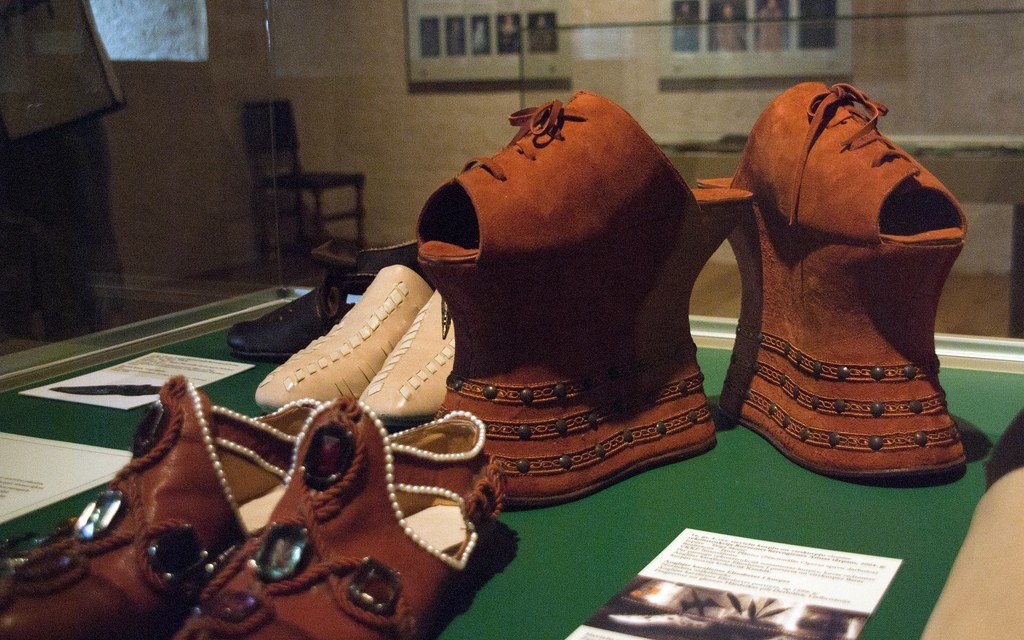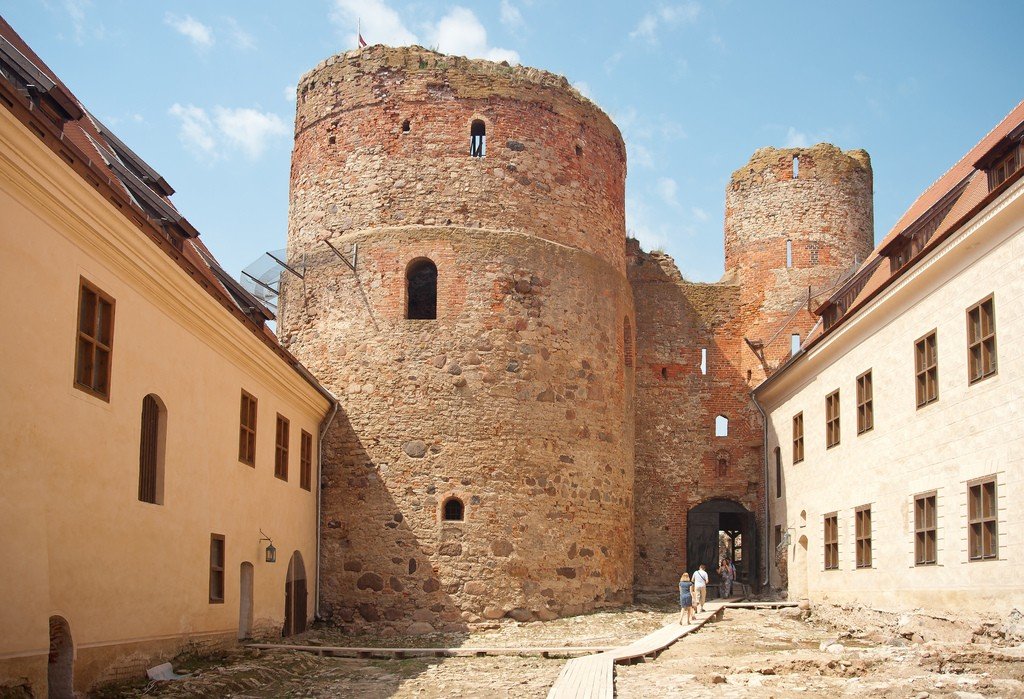Bauska Castle
Bauska Castle is a massive medieval fortress located on a hill in the Latvian city of Bauska. The older part of the castle appeared between 1443 and 1451, when the Livonian Order began to need a reliable outpost to protect its borders. It was built by order of the Order’s Master Heidenreich Fink Overberg for defense against the main geopolitical competitor – Lithuania, as well as to establish control over trade routes. The fortress was permanently inhabited by the Vogt of Bauska and housed an armed garrison.










Video: Bauska Castle
ContentsHighlights
During the late Renaissance, the Dukes of Courland, Friedrich and Gotthard Kettler, rebuilt the castle into a fortified palatial residence. They surrounded the castle with ramparts and bastions to protect it from possible enemies.
The first real assault on Bau Castle was in 1701. It was taken by the troops of the Swedish king Charles XII. A few years later, the fortress was taken over by the Russians. Tsar Peter I ordered to destroy the fortifications so that they could not be used by the opponents, and the main part of the castle was destroyed. For a long time, the locals used the stones for construction purposes, but in the 1970s, the fortress underwent extensive restoration work and was converted into a museum.
.
Today, only ruins remain of the first Livonian castle. These are the ruins of strong fortress walls, which at one time could withstand cannon fire. A collection of ancient cannons is exhibited here. The big tower of the old castle serves as an excellent observation platform. It overlooks the picturesque landscapes of Zemgale and the confluence of the Musa and Memele rivers.
.In addition to guided tours of Bauska Castle, the castle also hosts exhibitions and concerts. During workshops, visitors can learn court dances of the Renaissance period, learn about the outfits worn in the Duchy of Courland, and court traditions of the late 16th and early 17th century.
.Every year in mid-summer, Bauska Castle hosts the popular music and art festival “Vivat Curlandia!”. Musicians from Italy, France, Spain, Austria and the Baltic countries come to perform works by composers from the Middle Ages and the Renaissance, as well as the ancient opera “Eurydice.”
>Features of the architecture
The old Bauska Castle was characterized by its unusual layout. The ruins of the Livonian castle have dimensions of 124 by 43 meters. In former times, five towers rose along the perimeter of its walls. It is noteworthy that they stood not at the corners, but in the middle of the walls.
.The sections of the walls, exposed to the greatest threat, Livonian knights made twice as thick as the walls that closed the safe directions. The average thickness of the walls was 1.7 meters, but on the southern side the fortress walls reached 3.6 meters. At the time of the Livonian Order, a powerful quadrangular tower was erected here, where cannons were stored.
.
The more modern part of Bauska Castle, the former residence of Gotthard Kettler, Duke of Courland and Semigallia, is well preserved. It was built between 1582 and 1596. Today this castle-palace is the only monument in Latvia built in the Mannerist style with elements of arts and crafts, common in the Duchy of Courland.
.The modern castle has been perfectly restored both inside and out. The elegant ducal palace contrasts clearly with the old red-brick ruins of the Livonian castle, but despite this it forms a harmonious architectural ensemble with them.
.
Interiors and park
Inside the new part of Bauska Castle, restorers have restored several halls decorated in Renaissance and Renaissance traditions. There are exhibits of the museum, which tells how the Duchy of Courland and its rulers were. In the museum halls you can see knights’ lats, weapons, pieces of furniture, old books, chests, tiled stove and kitchen utensils. Curiously, even the glass of the castle is recreated using centuries-old technologies, and exact copies of ancient outfits are sewn in the workshop of the Riga Theater.
.There is a picturesque park area next to Bauska Castle. After visiting the castle, tourists can walk along the promenade through the east-west park, go to the island and visit the place where the Lielupe River starts.
.
Visitor information
The ancient castle is open to tourists on all days except Mondays: from May to September – from 9.00 to 19.00, in October – from 9.00 to 18.00, and from November to April – from 11.00 to 17.00. You can travel around the territory of Bauska Castle on your own or with a guide. Tours of the castle are conducted in Latvian, English, German and Russian. Audio guides cost 1.50 €, but there are no audio guides in Russian. For the opportunity to take photos with a camera you have to pay 1.50 €, and for taking photos with a phone you don’t have to pay.
.
Between May and October, the entrance ticket for adults costs 5 €, for students and schoolchildren – 2.50 €. In the low season, from November to April, the cost is reduced. A ticket for adults costs 4 € and for students and schoolchildren 2 €. Families with children are offered discounted tickets from 5 to 8 €. Children under the age of 7 are allowed into the castle for free.
.If tourists want to see only the expositions on the history of Bauska Castle, they have to pay 2 € for adults and 1 € for students and schoolchildren. The ruins of the Livonian Order fortress with its observation deck are open from May to October. Admission costs 1.50 € for adults and 0.70 € for students and pupils. Please note that 30 minutes before closing time they only sell tickets for the Old Castle ruins and the observation deck.
.Visitors over the age of 16 can try their hand at crossbow shooting. You have to pay 1.50 € for three shots. The Bauska Castle has a café where you can relax and eat inexpensively. Until 14.00, you can have a set lunch for 4.50 €. Parking is free for visitors.
.How to get there
Bauska Castle rises near the confluence of the Musa and Memele rivers. There are shuttle buses to Bauska from Riga. They cover the 69 km distance in 1 hour and 15 minutes.
>